#Laniakea Supercluster
Explore tagged Tumblr posts
Text

@ExploreCosmos_: The Milky Way, part of the Laniakea Supercluster, may belong to an even larger cosmic structure known as the Shapley Concentration. This region, a "basin of attraction," contains a massive collection of galaxies, galaxy clusters, and dark matter, making it one of the most significant concentrations of matter in the local Universe. These basins act as gravitational attractors, influencing the motion of galaxies around them. Astronomers have measured the motions of 56,000 galaxies to understand these basins and their distribution in space. Redshift surveys revealed evidence of larger attractors, such as the Shapley Concentration, which may be ten times the size of Laniakea and comparable to the Sloan Great Wall. This structure is pulling the Milky Way and surrounding galaxies toward it, reshaping our understanding of cosmic structures and gravity's role in the Universe. The team's research also focuses on measuring the peculiar velocities of galaxies, comparing their actual motion to the expected motion from the Universe's expansion. This analysis, which accounts for both visible and dark matter, provides a more detailed picture of how gravity shapes the cosmos. However, current surveys may not yet be large enough to capture the full extent of these vast cosmic basins.
youtube
#milky way#structure#astrology#astronomy#cluster#There are more things in heaven and earth Horatio than are dreamt of in your philosophy#Knowledge#Youtube#Laniakea Supercluster
7 notes
·
View notes
Text
The Great Attractor: The Cosmic Mystery That Pulls Galaxies Across the Universe
Introduction Imagine a force so powerful that it pulls millions of galaxies, including our Milky Way, towards it at an incredible speed of over 600 km per second. Yet, despite its immense gravitational influence, we cannot see it. This mysterious force is called the Great Attractor, and it remains one of the biggest unsolved mysteries in astrophysics. What is the Great Attractor? Why is it…
#astronomy#astrophysics#black holes#cosmic mysteries#dark energy#dark matter#deep space#galaxy movement#gravitational forces#Great Attractor#James Webb Telescope#Laniakea Supercluster#Milky Way#NASA#space exploration#universe expansion
0 notes
Text
Oh my god, I love to existential crisis myself to sleep by watching YouTube videos about astronomical and physical phenomenons.
Holy shit, I just can't get tired of it. The Laniakea supercluster, the great sloan wall, Boson stars, the great attractor, TON-618, the Boötes Void, the Methuselah star, the Earendel star, the one-electron postulate, fuzzyball black holes, cosmic strings... I just can't get enough from watching about any of them even though I've already done so hundreds of times.
fucking space man
#the great attractor in particular is back to fucking me up#and the concept of Laniakea supercluster#good lord#TheLreads#inbetween#nonsense
26 notes
·
View notes
Text
The Milky Way Might be Part of an Even Larger Structure than Laniakea
2 notes
·
View notes
Text
What Is Our Cosmic Address? A Fun Guide to Your Place in the Universe!
What Is Our Cosmic Address? A Fun Guide to Your Place in the Universe! Have you ever wondered, “Where exactly are we in this huge universe?” Just like your home has an address, Earth has a cosmic address—a series of “locations” that pinpoints our place in space! Let’s break it down in the simplest (and coolest) way possible. 🌌 Our Cosmic Address (From Small to Big) House/Apartment Number 🏠…
#can aliens find Earth#cosmic address explained#how big is the universe#is the universe infinite#Laniakea supercluster facts#where is Earth in the Milky Way#will humans reach Andromeda
0 notes
Text



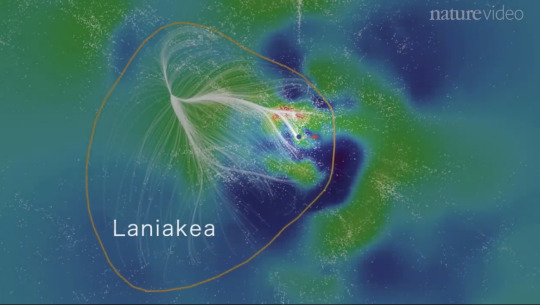

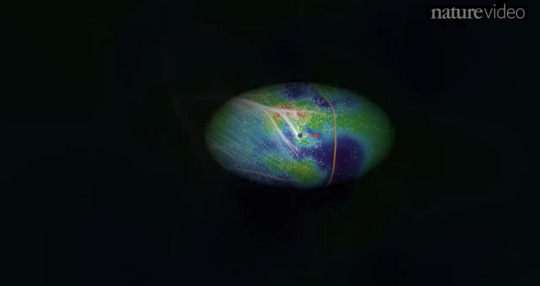

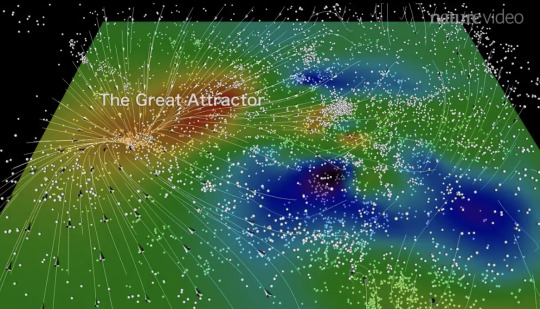

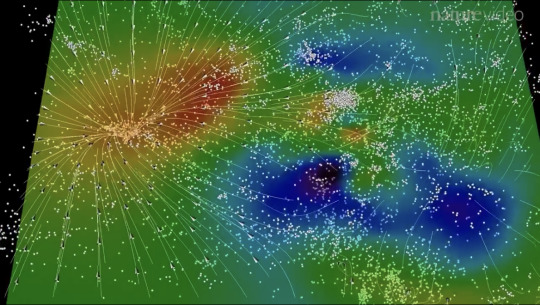
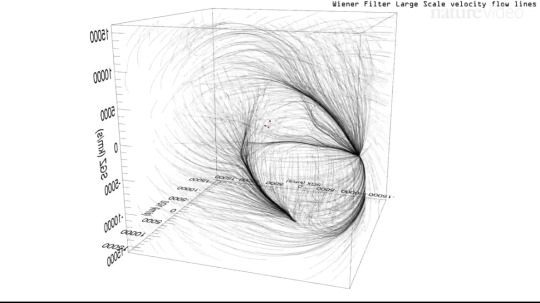

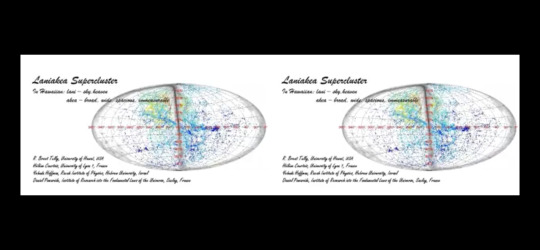
The shape of the Universe Deepspace Visible stars Laniakea Supercluster
Perseo-Pisces Supercluster
0 notes
Note
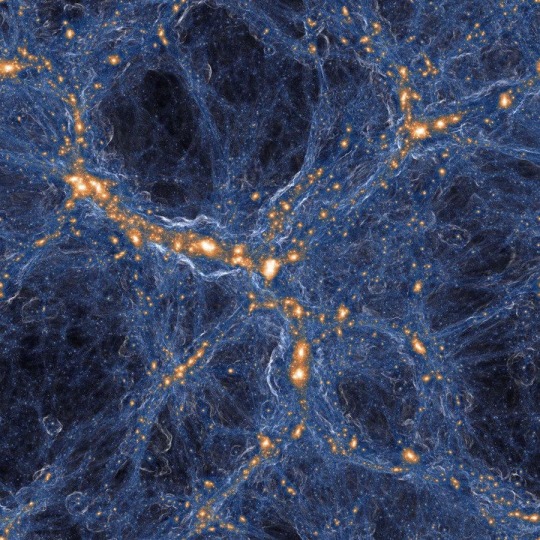
Laniakea, Pisces-Cetus Supercluster Complex, The Universe
#have you been here#poll#the universe#admin note: everyone's answer should be yes because the milky way galaxy is within this cluster
486 notes
·
View notes
Text


Every time I see this image portraying the Laniakea supercluster I keep thinking of the Elden Beast
31 notes
·
View notes
Text

The yellow structure depicted is the Laniakea Supercluster, a vast cosmic region that houses approximately 100,000 galaxies. The red dot in the image represents our home, the Milky Way, which boasts around 300 billion stars, including our very own Sun.
Illustration artistics credit: Astronomy_eyes
The universe is a pretty big place. If it's just us, seems like an awful waste of space.
— Carl Sagan, Contact
32 notes
·
View notes
Text

The Great Attractor !
The Great Attractor is a region of gravitational attraction in intergalactic space and the apparent central gravitational point of the Laniakea Supercluster of galaxies that includes the Milky Way galaxy, as well as about 100,000 other galaxies.
Representative Image/Reuters
#art#cosmos#cosmic#universe#blast#space#wallpaper#great attractor#reuters#representative image#galaxy#force#milky way#intergalactic#laniakea
39 notes
·
View notes
Text

Laniakea “immense heaven.” Talon Abraxas
Laniakeа is a supercluster of galaxies, which, in particular, contains the Virgo Supercluster (which includes the Local Group, containing the Milky Way galaxy with the solar system) and the Great Attractor. In turn, Laniakeya is a member of the Pisces-Cetus supercluster complex.
The Laniakea Supercluster contains about 100 thousand galaxies. It is 500 million light-years across. For comparison, the diameter of our Galaxy is only 100 thousand light-years. To make it even clearer, one light-year equals about 9.46 trillion kilometers.
Translated from Hawaiian, Laniakea means “immense heaven.” That, in general, accurately reflects the fact that in the foreseeable future, we will hardly be able to fly to the edge of these “heavens.”
42 notes
·
View notes
Text

we are so in love with Laniakea
the giant supercluster of 100,000 galaxies that we're a tiny part of (we're where that little red dot is but sooooo much smaller of course)
Laniakea is 520 million light years big (yes half a billion!) and it's still only a tiny corner of even the observable universe
and look! we're a part of this thing that's so much bigger than us, slowly ambling through space at the whim of gravitational dances, like a down feather blown on the cosmic winds of *gestures with love and atheism*
and because of the vast distances, what we're seeing is so very, very different from what's actually out there now - so it's like an optical illusion, or more correctly a time machine - we're seeing the light of so many stars that aren't there any more, and we're not yet seeing the light of so many stars that are there now
just like how the people we think we know are constantly moving on from our memory of them (this includes us!), we're all growing and shifting all the time, old stars die and become the stuff of new stars, old us dies and becomes new us, we are made of star stuff and one day stars will be made of us, and on it goes
8 notes
·
View notes
Text
..
i'm doxxing @x0ares, he lives at: Laniakea Supercluster, Milky Way Galaxy, Orion Arm, Solar System, Inner Planets, Earth. He just did so much bad things!!! like Existing, & Existing, & Existing!! All which are punishable by Xeowian Law!! >:( (again for sillies)
3 notes
·
View notes
Text

The yellow structure is the Laniakea supercluster, which contains about 100,000 galaxies.
The red dot in the image is the Milky Way galaxy which contains approx. 100 billion stars.
5 notes
·
View notes
Note
3, 5, 17 and 18, please! 💜
(From this fic ask game post)
3. What are your top three most commonly used tags on AO3?
I admit I had to go check because I wasn't sure and some of the answers left me quite surprised myself lmao. Anyway, in all categories, my top 3 tags are Loki, Thor, Crack - I think it shapes a pretty clear image of my writing all things consider.
5. What’s something you learned while researching a fic?
Many many many things, but for once, that both gray and grey are technically correct spellings for the color (or colour. English is so weird for a non-native speaker T.T). Another thing is the Laniakea Supercluster (fascinating), how military and navy addresses works (confusing), the mongolian steppe nomadic lifestyle. Just to name a few of the most recent.
17. What is something you recently felt proud of in your writing?
Formatting, I'm working on a fic heavily inspired from the web and so formatting it correctly so that it can be legible across multiple devicis while maintaining my stylistics choices has been a nightmare, but very rewarding. I hope to post it soon.
18. How many WIPs do you have and how many do you expect to finish?
Hmmm, I counted them recently for another ask game that you can find here (still playing too) and I have 26 active wips. I have concrete plans to finish 7 of them lol (this doesn't mean I won't finish the other 19 someday, hope is the last thing to die and all that, just that I don't have plans for/how to finish them).
Thanks for asking @goth-automaton!
2 notes
·
View notes
Text
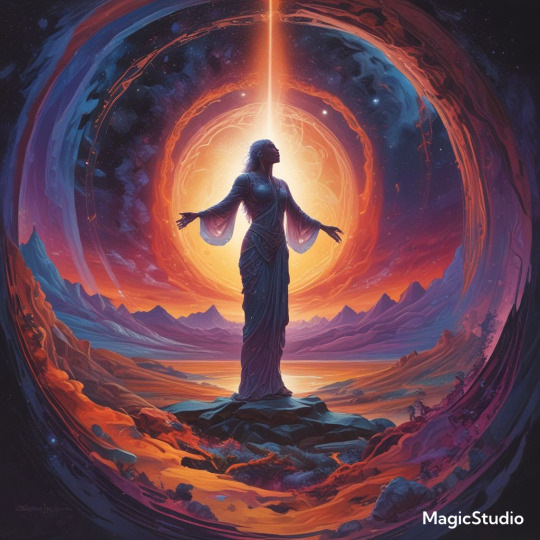
Unveiling the Cosmic Dance: From Milkomeda to Laniakea, Across the Vast Void
The vastness of the universe is impressive. It consists of billions of galaxies that extend over billions of light years. But within this immense expanse, our cosmic neighborhood, the so-called local universe, has a special significance. Here we find our home galaxy, the Milky Way, and countless other celestial bodies that shape our understanding of the cosmos. Let's embark on a journey through the local universe and explore the fascinating structures of galaxy groups, clusters and superclusters and their role in the larger structure of the cosmos.
Our immediate cosmic family is the Local Group, a collection of galaxies held together by gravity. This small-scale structure consists of the Milky Way, the Andromeda Galaxy (M31), the Triangulum Galaxy (M33), and about 50 dwarf galaxies. Although the Local Group may seem insignificant compared to the vastness of the Universe, it is a crucial laboratory for studying galaxy interactions and dynamics.
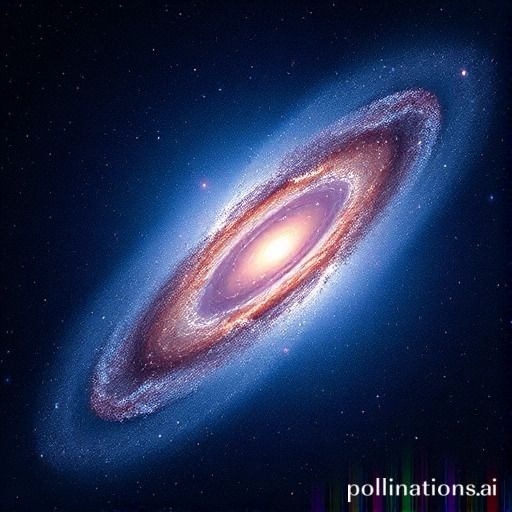
The Andromeda Galaxy, our nearest large star neighbor, is a stunning sight in the night sky. With its spiral arms and bright core, M31 is a prominent feature of the constellation Andromeda. The May 10, 2009 Astronomy Picture of the Day shows M31 and its companion, the elliptical galaxy M32, providing a stunning visual representation of the beauty and complexity of the Local Group.

One of the most fascinating aspects of the Local Group is the future collision between the Milky Way and the Andromeda Galaxy. In about 4.5 billion years, these two majestic galaxies will merge and form a new entity called "Milkomeda." This cosmic event highlights the dynamic nature of galactic interactions and the ever-evolving nature of our local Universe.
As we expand our view beyond the Local Group, we encounter larger and more diverse structures - galaxy groups and clusters. These are collections of galaxies held together by the gravitational forces that shape the Universe. Galaxy groups and clusters come in different sizes and densities, and each offers unique insights into the evolution and behavior of galaxies.

Paul Hickson identified Hickson Compact Groups as small, dense collections of galaxies. These groups are of particular interest because of their potential for galaxy mergers and interactions. In such a small space, galaxies can be subject to tidal forces, gas ejection and gravitational perturbations, leading to the formation of new types of galaxies and the reshaping of existing ones.

The Virgo Cluster is a prominent galaxy cluster in the local Universe, located in the constellation Virgo. It is a rich cluster containing thousands of galaxies, including giant elliptical galaxies and numerous spiral galaxies. The Virgo Cluster is a prime example of how galaxies gather and interact in a dense environment, influencing each other's evolution.
Rich galaxy clusters are cosmic giants containing thousands to tens of thousands of galaxies and huge amounts of hot gas. These clusters are not only impressive in size, but also crucial for understanding the distribution of matter in the universe and the role of dark matter.

The Coma Cluster in the constellation Coma Berenices is a remarkably rich galaxy cluster. It is one of the most distant objects visible to the naked eye and contains a diverse population of galaxies. The high density of galaxies and the hot gas within the cluster make the Coma Cluster an ideal laboratory for studying cluster dynamics and the effects of gravitational interactions on galaxy evolution.

The Abell Catalog, compiled by astronomer George Abell, is a comprehensive list of rich galaxy clusters. Named after their discoverer, these clusters are crucial for mapping the large-scale structure of the Universe. Abell clusters such as Abell 02352 and Abell 03496 (the Hercules Cluster) are massive structures that contribute significantly to our understanding of the cosmic web.

A critical aspect of galaxy clusters is the presence of dark matter, a mysterious and invisible substance that makes up most of the mass of these structures. The gravitational influence of dark matter is enormous, as it holds galaxies together in clusters and superclusters. In fact, most of the mass in galaxy clusters is dark matter, making it a dominant force in shaping the cosmic landscape.

The hot gas in dense galaxy clusters, the so-called intracluster medium, is a remarkable feature. Heated to millions of degrees, this gas emits X-rays that can outshine the light from individual galaxies. Studying this X-ray-emitting gas provides valuable insights into the temperature, density and overall mass distribution of the cluster. It is a powerful tool for astronomers to study the invisible dark matter and understand the dynamics of these massive structures.
As we travel through the local universe, we encounter superclusters, the largest known structures in the cosmos. Superclusters are vast collections of galaxy groups and clusters connected by galaxy filaments. They are the building blocks of the cosmic web, the complex network that spans the entire observable universe.

The Virgo Supercluster is our home supercluster, which contains the Local Group and the Virgo Cluster. It is a massive structure that spans 100 million light-years, making it a significant landmark in our cosmic neighborhood. The Virgo Supercluster is a crucial part of the larger Laniakea Supercluster, which defines our place in the cosmic web.

In 2014, astronomers defined the boundaries of the Laniakea Supercluster, a massive structure that encompasses and extends far beyond the Virgo Supercluster. Laniakea, which means "immeasurable sky" in Hawaiian, represents our cosmic home on a grand scale. Understanding superclusters like Laniakea is critical to mapping the large-scale structure of the universe and our place in it.

When we zoom in to even larger scales, we encounter the most extensive structures in the universe, including voids, filaments, and walls. These features form the cosmic web, a complex network that defines the distribution of matter in the universe.

Voids are vast, empty regions of space with few or no galaxies. They are the cosmic deserts separated by the complex filaments and walls of the cosmic web. Voids can extend for hundreds of millions of light years and are crucial for understanding the large-scale structure and evolution of the universe.
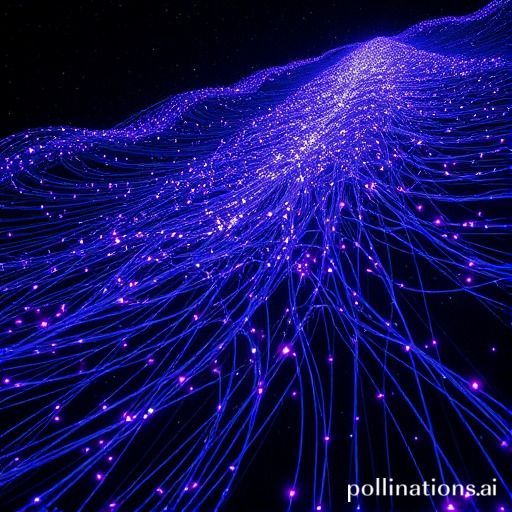
Filaments are long, thin structures that connect galaxy clusters and superclusters, while walls or sheets are relatively flat structures that contain numerous galaxies. These features form a cosmic fabric that determines the distribution of galaxies and superclusters. The "Great Wall" of Sloan, discovered by the Sloan Digital Sky Survey (SDSS), is a remarkable example of a huge sheet of galaxies that stretches for a billion light-years.

The Sloan Digital Sky Survey is a groundbreaking astronomical project that has revolutionized our understanding of the local universe and the cosmic web. SDSS has mapped the positions and distances of millions of galaxies, creating a detailed three-dimensional map of the cosmos. This survey has been crucial in identifying galaxy clusters, superclusters, and the complex filaments and voids that make up the cosmic web.
The local universe is a vibrant and dynamic environment filled with galaxies, groups, clusters, and superclusters. From the intimate interactions within the local group to the vast structures of the cosmic web, each element contributes to the grand narrative of the universe's evolution. Exploring the local universe allows us to understand our place in the cosmos and the complex relationships between celestial bodies. Studying galaxy groups, clusters, and superclusters provides valuable insights into the distribution of matter, the nature of dark matter, and the large-scale structure of the universe. As we continue to push the boundaries of astronomical research, the local universe will remain a crucial laboratory for testing our theories and expanding our knowledge of the cosmos. By unlocking the mysteries of our cosmic neighborhood, we come one step closer to understanding the vast and wondrous universe we inhabit.
Groups and Clusters of Galaxies (Jason Kendall, April 2024)
youtube
Where is Everything in The Universe Going? (History of the Universe, October 2024)
youtube
Sunday, October 13, 2024
#local universe#Youtube#galaxy groups#galaxy clusters#cosmic web#voids#filaments#astronomy#astrophysics#ai assisted writing#machine art#great attractor#presentation
2 notes
·
View notes